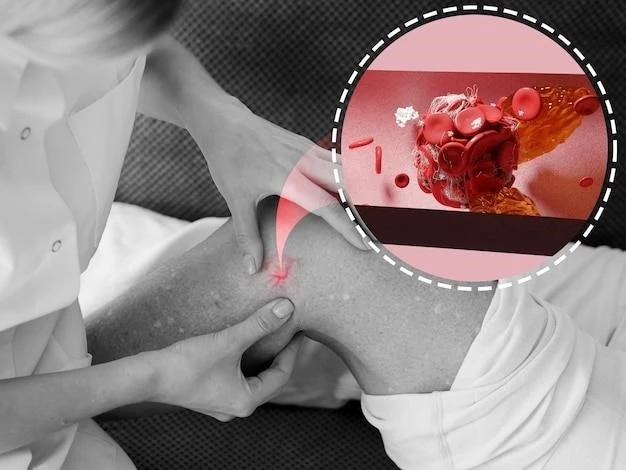Introduction
Short stature-wormian bones-dextrocardia syndrome is a rare genetic disorder affecting skeletal and heart development․ Learn about its diagnosis, treatment, and impact on health․
Overview of Short Stature Wormian Bones Dextrocardia Syndrome
Short stature-wormian bones-dextrocardia syndrome is a rare genetic disorder characterized by abnormal bone development, heart positioning, and growth hormone deficiency․ Manifestations may include additional skeletal anomalies and developmental delays․ Early diagnosis, genetic testing, and multidisciplinary management are crucial for affected individuals․
Disease Definition
Short stature-wormian bones-dextrocardia syndrome is a rare genetic condition characterized by specific skeletal and cardiac abnormalities․
Characteristics and Manifestations
Short stature-wormian bones-dextrocardia syndrome presents with specific manifestations including abnormal bone development termed wormian bones, a displaced heart (dextrocardia), growth hormone deficiency leading to short stature, as well as additional features such as brachycamptodactyly, developmental delays, and anomalies in kidney, reproductive organs, and skeletal asymmetry․ Understanding these characteristics aids in the diagnosis and management of this rare genetic condition․
Clinical Presentation
Patients with short stature-wormian bones-dextrocardia syndrome may exhibit anomalies such as wormian bones, dextrocardia, short stature, growth hormone deficiency, brachycamptodactyly, kidney abnormalities, and developmental delays․
Key Symptoms and Features
Key symptoms of short stature-wormian bones-dextrocardia syndrome include wormian bones, dextrocardia, growth hormone deficiency resulting in short stature, brachycamptodactyly, kidney abnormalities, cryptorchidism, hypospadias, imperforate anus, body asymmetry, developmental delays, and potential anomalies in intellectual and limb development․ Recognizing these features is crucial for diagnosis and appropriate management of individuals affected by this rare genetic condition․

Diagnosis
Diagnosing short stature-wormian bones-dextrocardia syndrome involves identifying characteristic features like wormian bones, dextrocardia, short stature, growth hormone deficiency, brachycamptodactyly, and developmental delays, often requiring genetic testing and a multidisciplinary assessment․
Methods and Approaches
Diagnosing short stature-wormian bones-dextrocardia syndrome typically involves a thorough physical examination to identify characteristic features like wormian bones, dextrocardia, and short stature․ Further diagnostic approaches may include genetic testing, imaging studies to assess skeletal anomalies, hormonal assessments to evaluate growth hormone deficiency, and developmental assessments to identify delays․ A multidisciplinary team of healthcare providers often collaborates to reach an accurate diagnosis․
Etiology
The Short Stature-Wormian Bones-Dextrocardia syndrome is mainly caused by genetic factors leading to specific skeletal and cardiac abnormalities, including wormian bones, dextrocardia, and growth hormone deficiency associated with short stature․
Causes and Genetic Factors
The Short Stature-Wormian Bones-Dextrocardia syndrome is primarily caused by genetic factors leading to specific skeletal and cardiac abnormalities, such as wormian bones, dextrocardia, and growth hormone deficiency contributing to short stature․ Additional manifestations may include brachycamptodactyly, kidney hypoplasia, cryptorchidism, hypospadias, imperforate anus, body asymmetry, and developmental delays, all influenced by underlying genetic alterations affecting bone growth and remodeling․
Epidemiology
Short stature-wormian bones-dextrocardia syndrome is a rare genetic disorder affecting skeletal and cardiac development, often associated with growth hormone deficiency․
Prevalence and Incidence Rates
Short stature-wormian bones-dextrocardia syndrome is considered a rare genetic disorder, with limited reported cases globally․ The incidence and prevalence rates are challenging to determine due to its rarity and variable clinical presentations, emphasizing the importance of further research and data collection to better understand the epidemiology of this syndrome․
Short stature-wormian bones-dextrocardia syndrome may be associated with additional anomalies such as brachycamptodactyly, kidney hypoplasia, cryptorchidism, body asymmetry, and more․
Associated Conditions
Short stature-wormian bones-dextrocardia syndrome may present with various anomalies like brachycamptodactyly, kidney hypoplasia, cryptorchidism, body asymmetry, and other related manifestations․
Treatment Options
Treatment for short stature-wormian bones-dextrocardia syndrome involves addressing specific manifestations like growth hormone deficiency, skeletal anomalies, and cardiac abnormalities through a multidisciplinary approach tailored to each individual’s unique needs․
Management Strategies and Interventions
Managing short stature-wormian bones-dextrocardia syndrome involves addressing growth hormone deficiency, skeletal anomalies, and cardiac issues through a personalized treatment plan․ Strategies may include growth hormone therapy, orthopedic interventions for bone abnormalities, and cardiac monitoring or corrective procedures as needed․ Multidisciplinary care involving endocrinologists, orthopedic specialists, cardiologists, and other healthcare professionals is essential for tailored management of this rare genetic condition․
Prognosis
The prognosis for individuals with Short Stature-Wormian Bones-Dextrocardia syndrome varies depending on the severity of associated anomalies, timely diagnosis, and access to multidisciplinary care․
Outlook and Long-Term Effects
The long-term outlook for individuals affected by Short Stature-Wormian Bones-Dextrocardia syndrome is influenced by the severity of associated anomalies and the effectiveness of multidisciplinary management; Early diagnosis and comprehensive care can help improve quality of life and potentially mitigate long-term effects of this complex genetic condition․

Research and Studies
Ongoing research investigates the genetic basis, pathophysiology, and potential treatments for Short Stature-Wormian Bones-Dextrocardia syndrome, aiming to enhance understanding and care for affected individuals․
Current Investigations and Findings
Research on Short Stature-Wormian Bones-Dextrocardia syndrome focuses on understanding the genetic basis, pathophysiology, and treatment options․ Recent studies aim to improve diagnosis accuracy, explore potential therapeutic interventions, and enhance the overall care and management strategies for individuals affected by this complex genetic condition․
Support Resources
Community groups and advocacy organizations offer support and information for individuals with Short Stature-Wormian Bones-Dextrocardia syndrome, aiding in understanding and managing the rare condition․
Community Groups and Advocacy Organizations
Community groups and advocacy organizations play a vital role in providing support, information, and resources to individuals and families affected by Short Stature-Wormian Bones-Dextrocardia syndrome․ These groups offer a sense of community, share experiences, and advocate for awareness and research advancements related to this rare genetic condition․
Healthcare Providers
Healthcare providers, including endocrinologists, orthopedic specialists, and cardiologists, play a crucial role in managing individuals with Short Stature-Wormian Bones-Dextrocardia syndrome․
Specialists and Clinicians
Experts specializing in endocrinology, orthopedics, cardiology, and genetics play vital roles in diagnosing and managing individuals with Short Stature-Wormian Bones-Dextrocardia syndrome, providing comprehensive and tailored care․
Information on disability benefits and financial aid for individuals with Short Stature-Wormian Bones-Dextrocardia syndrome can provide essential support and resources for managing the condition’s impact on daily life․
Financial Assistance
Financial aid and disability benefits can provide crucial support for individuals with Short Stature-Wormian Bones-Dextrocardia syndrome, helping them access necessary care and resources to manage the condition’s impact on their daily lives․
Differential Diagnoses
When considering differential diagnoses for Short Stature-Wormian Bones-Dextrocardia syndrome, healthcare providers may examine conditions such as Stratton-Parker syndrome and skeletal dysplasias with similar clinical features․
Conditions to Consider
When evaluating differential diagnoses for Short Stature-Wormian Bones-Dextrocardia syndrome, healthcare professionals should consider conditions like Stratton-Parker syndrome and other skeletal dysplasias that exhibit similar clinical features and manifestations, aiding in accurate diagnosis and tailored management approaches;
Conclusion
In conclusion, Short Stature-Wormian Bones-Dextrocardia syndrome represents a rare genetic condition characterized by specific anomalies affecting skeletal and cardiac development․ The identification of key features such as wormian bones, dextrocardia, and growth hormone deficiency is crucial for accurate diagnosis and appropriate management tailored to each individual’s needs․
Summary of Short Stature Wormian Bones Dextrocardia Syndrome
Short stature-wormian bones-dextrocardia syndrome is a rare genetic disorder characterized by specific anomalies affecting skeletal and cardiac development․ It is associated with wormian bones, dextrocardia, and growth hormone deficiency, among other manifestations like brachycamptodactyly, kidney hypoplasia, cryptorchidism, and body asymmetry․ Accurate diagnosis and tailored management are essential for individuals with this complex genetic condition․
